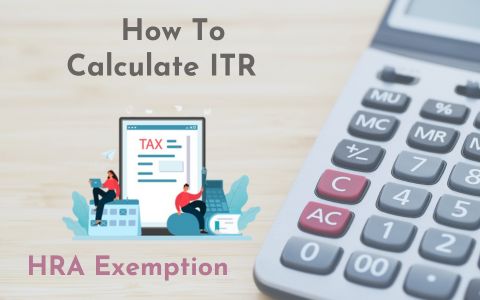How to Calculate ITR HRA Exemption
Introduction
Consider that you spend $15,000 per month in rent in Bangalore. Your base monthly salary is 70,000, plus a health reimbursement allowance of 20,000. In this case, your HRA exemption limit will be calculated as follows:
- Actual HRA paid = 2.4 lakhs per year
- 50% of the minimum wage = 3 lakhs
- Extra rent paid each year that exceeds 10% of the base pay = 1.2 lakhs
- The HRA exemption amount is 1.2 lakhs, with the remaining 1.2 lakhs subject to taxation.
Once you’ve determined the amount of your HRA claim, use the appropriate ITR form and submit your ITR by performing the following:
- Enter your salary in Form 16 – Part B, under ‘Salary as per requirements contained in Section 17(1)’. The above-mentioned HRA should be entered in the ITR 1 as ‘allowances exempt u/s 10’ (choose 10(13A) from the drop-down box).
If you follow these HRA tax exemption standards, you can easily claim your HRA exemption while filing your ITR reports if you use an HRA exemption calculator to calculate your HRA.
To calculate your HRA deductions, use the HRA tax exemption calculator, which is available online. Claiming HRA exemption is an excellent way to reduce your annual taxable income. As a result, investing in insurance plans, retirement annuity plans, and savings insurance can be advantageous.

How Does HRA Get Taxed?
Only in rare cases is tax exemption for the entire HRA guaranteed. The lowest of the following three thresholds will be considered tax-free:
- HRA provided by your employer
- Rent paid in full minus 10% of pay
- 50% of the minimum wage for those living in major cities
- 40% of base wage for people living outside of large cities
- The remaining HRA is deducted from your taxable wage.
Conclusion
In conclusion, calculating the House Rent Allowance (HRA) exemption for Income Tax Return (ITR) requires an awareness of the precise rules and criteria established by the tax authorities. The HRA exemption is computed as the lesser of three amounts: the actual HRA received, 50% of the basic salary (for employees in metro areas) or 40% of the basic salary (for employees in non-metro areas), and the excess of rent paid above 10% of the basic pay. Taxpayers can precisely calculate their HRA exemption for ITR by analysing these components and determining the highest allowable exemption.
It is critical to keep sufficient documentation and receipts to support the HRA claim and ensure tax compliance. Seeking professional assistance can help you through the difficulties of HRA calculations.



